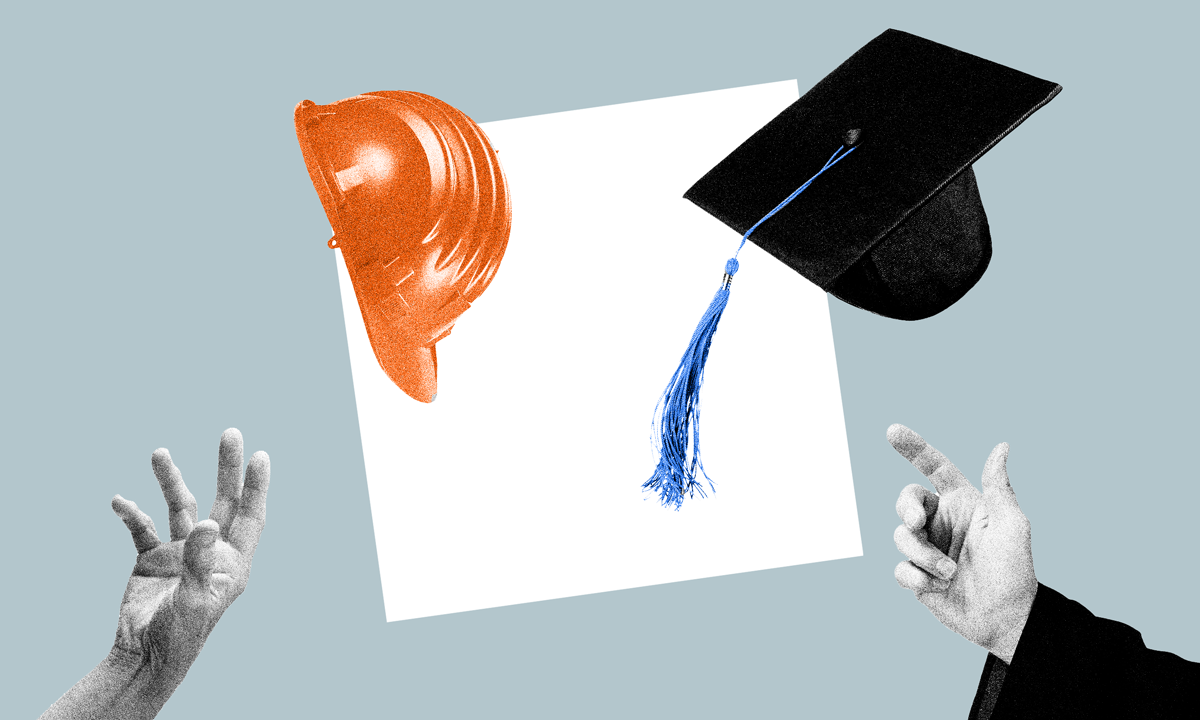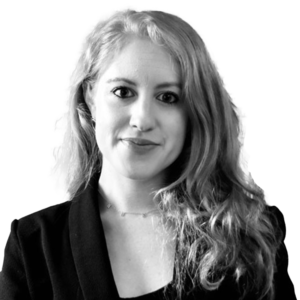Researchers Study Six New England High Schools to Find Path for Student Success
In deep, post-pandemic dive, researchers saw schools moving away from 'college for all,' grappling with COVID-era leniency.

Get stories like these delivered straight to your inbox. Sign up for The 74 Newsletter
A new study looking at how six New England high schools figured out the best ways to help students succeed post-pandemic identified moving away from “college for all” and grappling with whether to maintain COVID-era leniency as key themes.
The researchers found these schools, five out of six with high numbers of students of color and those on free and reduced-price lunch, asking how to offer students multiple pathways to postsecondary success, beyond just college, without lowering academic rigor or expectations. Chosen because they had a track record of innovation, the schools were questioning whether the accommodations given to students during the throes of remote learning or right after the return to in-person instruction were still serving them well.
In doing so, they are expanding their visions of success and reimagining their purpose, a move which researchers note could mark a departure from past understandings of schooling. They titled their study “A ‘Good Life’ for Every Student.”
“We saw high schools starting to adjust the goal posts, where they were taking on more responsibility for student success in the long run,” said Chelsea Waite, senior researcher at the Center on Reinventing Public Education at Arizona State University.
Between April 2022 and November 2023, Waite and her partner, Maddy Sims, from Columbia University’s Center for Public Research and Leadership, did 266 interviews with current high school students, graduates, parents, teachers and school administrators. Of the six schools, including some in Massachusetts and Rhode Island, four were traditional public and two were charter schools.
Two were alternative programs for students who are overage and undercredited, pregnant or parenting or have a history of chronic absenteeism. These students, administrators said, would have once been considered a success if they just reached graduation. Three other schools were focused on increasing access to Advanced Placement and other rigorous academic courses and to “Early College Experience” offerings.
Participating students and families identified three major priorities for post-high school futures: happiness, fulfillment and stability. For some, this included college. For others, it meant immediately entering the workforce. The concept of a “happy life” included financial security, but no one interviewed said salary was the main determinant of success.
These schools were not just trying to get students across the finish line to graduation and then directly to college, Waite said. Instead they were asking “What are students’ individualized understandings of who they want to be as adults and what they want to be in the world?” And “How can we set them up with a corresponding, individualized plan that can help them on that path to a good life?”
Each of the six schools prioritized students graduating with a “good plan” in place, but educators also acknowledged that “there really hadn’t been full alignment on what constitutes or what defines a ‘good plan’ in practice,” said Sims.
Looking to provide roadmaps for other high schools, researchers asked what success means to school communities, especially for students who have been historically marginalized; what solutions schools were exploring to help all students achieve; and what obstacles they were facing in this attempt.
Challenges they observed across schools:
- Educators’ concerns that increasing flexibility could decrease rigor
- Desire to give students room to define their own paths to success without perpetuating historical “opportunity gaps”
- Overreliance on traditional data (such as test scores or graduation rates), despite recognizing that these are insufficient to meaningfully track success
Examples of innovations they observed schools introducing to ensure students were academically engaged and supported:
- Shifts to interdisciplinary units and coursework. For example, in one school students were learning about marketing, social science, financial literacy and ratios in a multi-week course on the loan industry. One administrator said, “I think we can do a much better job of trapping kids in the honey of each content area. To be a writer is such a powerful thing. To be a scientist is such a powerful thing.”
- AP courses and “Early College Experience” courses, which partner with local colleges and universities
- Shift in grading towards “grading for equity” practices that focus on measuring what students know rather than how they behave
- Moving toward using the classroom as a space of exploration of identity and student-driven learning. One school allowed students to build credit-bearing “personalized learning experiences,” essentially independent studies with an advisor
- Individualized mentoring and counseling. For example, two schools used a “primary person” model, in which each student has one adult mentor who they check in with regularly
- Alternative approaches to discipline, such as “restorative circles,” which they defined as “conversations intended to repair relationships and find mutually-agreeable solutions, after a behavioral incident or conflict”
“We did feel ourselves really compelled to illustrate how many different actions— taken by different people at different levels of the system— are necessary to support high schools systemically to be the kinds of places that set students up for a life of their own choosing,” said Waite.
While most of the schools started this transformational work before 2020, the pandemic provided a unique opportunity to study high school reform, according to the researchers. These challenging few years “strengthened educators’ dedication to achieving new designs for high school,” while increasing their focus on race, racism and equity.
Waite and Sims noticed that educators and administrators across the board were reflecting on how to provide students with flexibility and support without compromising rigor and high expectations. As teachers welcomed students back from remote learning, they needed to prioritize creating a supportive environment to see young people through a disruptive, traumatizing period. But now they’re questioning what comes next.
In discussing leniency during the pandemic, one teacher said, “We didn’t teach coping mechanisms, we just protected [students].” Teacher turnover and burnout also made it hard to hold students accountable. At two of the schools studied, the teaching staff was so new that they didn’t know what the classrooms looked like before COVID hit.
As for “college for all,” the researchers found a number of reasons some students are moving away from that mindset, including financial stress and risk, burnout, high-stakes testing and applications, and an understanding that there are an increasing number of jobs that don’t require a college degree. Schools wanted to ensure that college doesn’t become a privilege for a select group of students, while also communicating that a wider variety of options exist.
High schools alone cannot be held wholly responsible to address all of the challenges presented in the report, the researchers said. “Instead, what we really observed is the incredible power of bridge building between high schools and the higher education sector, as well as between high schools and local employers.”
Waite acknowledged the study’s limitations, noting that these six schools don’t necessarily represent the entire country or even the Northeast. “What we do believe is that the themes and ideas and challenges that came through in the research … are really widespread and challenging issues that feel relevant to many different kinds of high schools.”
Get stories like these delivered straight to your inbox. Sign up for The 74 Newsletter


